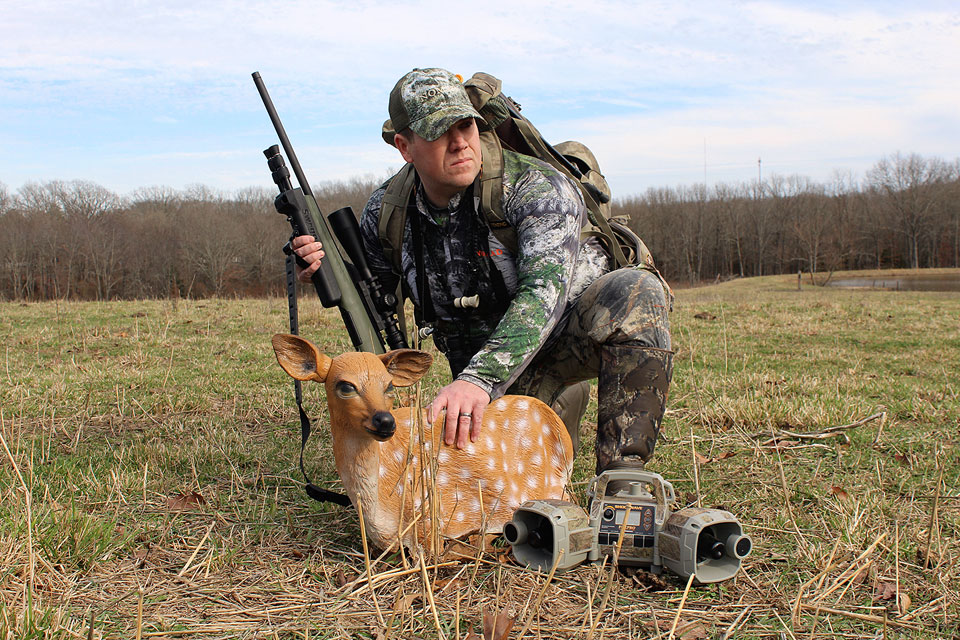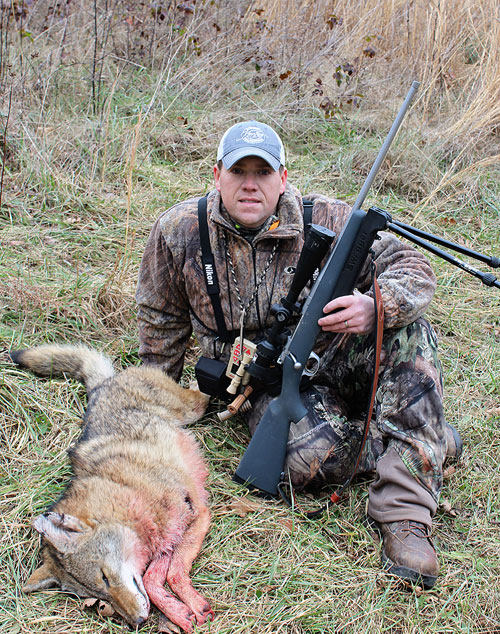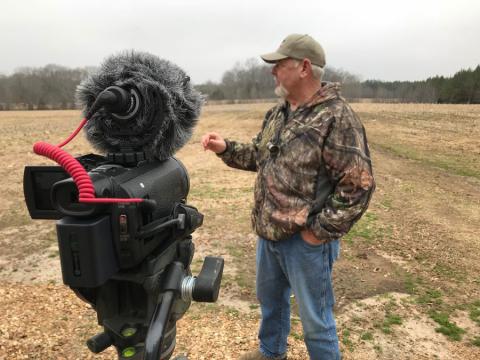Heath Wood

It is no secret that during the spring and summer months of the year, one of a coyote’s favorite meals is a whitetail fawn. But how much impact do coyotes really have on a deer herd? And what can one do to protect fawns on their land?
While on a predator hunt in western Oklahoma, I was intrigued by conversation about one of the hunts that had taken place earlier that day and about predator hunting in general. Since we were located at an outfitter that primarily did whitetail hunts as opposed to a predator hunt like the one that we were on, it is no surprise that the topic of managing whitetails by harvesting coyotes was one of the main subjects of conversation. During one of those conversations a story was told of a university doing a study on a coyote den that housed pups that were too young to gather food on their own. During a two-week span, this study found that one female adult coyote brought 10 fawns back to the den for her pups. Regardless if this “study” was in fact real or just a story handed down, it made me really start thinking about how coyotes impact fawns and the deer population in general.
The topic came up again a few weeks ago, and this time I started doing some research for myself. I researched people and studies that had been done on coyotes bringing fawns to a den, and the findings were startling. When we think about predator hunting being used as a tool for our deer herd, it is important to think about saving fawns first. Even though it is not unheard of, a coyote will rarely take down an adult deer unless it is injured or sick.
The biggest impact coyotes have on a whitetail herd is when fawns are being born and raised during the spring and summer months. While researching this topic I came across a forum called Ag Talk. While scrolling through various comments, it was noted several times of people setting game cameras over a coyote den and how amazed they were at the number of fawns that had been brought in by one particular coyote.
“One of the guys that hunts our land has a friend that set a camera outside a coyote den. One female brought 26 fawns back for the pups. No one had any luck hunting this year,” wrote one concerned hunter.
 Another hunter wrote, “A church friend of mine said a fellow had set up a trail cam last spring focused on a coyote den near Mullinville someplace. They recorded 20 fawns being dragged to the den. TWENTY! We have the same problem; deer numbers are down.”
Another hunter wrote, “A church friend of mine said a fellow had set up a trail cam last spring focused on a coyote den near Mullinville someplace. They recorded 20 fawns being dragged to the den. TWENTY! We have the same problem; deer numbers are down.”
After reading these concerns on this particular forum, it answered one of my questions as to how many fawns coyotes actually harvest. No matter if the university’s study that I heard about was true or not, there are people all across the United States that can relate to the same problem, which is coyotes hurting the fawn population more than anything else.
As for deer hunters asking what can be done to save fawns, my number one answer would be to harvest coyotes. If the coyote population decreases, there is a good chance that the deer population will increase. As a diehard predator hunter, I have enjoyed hunting coyotes for a long period of time. Throughout that time, I would like to think that I have learned a few things about coyotes themselves along the way. One of things I have learned is that coyotes are one of the most territorial animals on the planet. For example, when a coyote has been taken from a particular property, another one will replace it within a few days. This is why predator management should be done all year long. Most predator hunters who hunt spring and early summer to help save fawns that are born during this time will agree that this is the best time to harvest coyotes to help one’s deer herd. However, there are also some that think if five or six coyotes are taken off a piece of land that everything is good to go. Yes, it helps but that is not totally true. To effectively manage predators they need to be hunted all year long.
The next thing I have learned by predator hunting for several years is when hunting and calling coyotes, one has to be versatile in calling. Some will argue with this statement, stating that if you stick with the basic sounds, calling coyotes can be successful all year long. This may be true if talking about predator hunting in general, where one can travel all over hunting and calling coyotes. However, if hunting coyotes on one particular piece of property all year, one has to be versatile. For example, in the spring and early summer when hunting hard trying to keep coyotes from fawns, I will use fawn in distress sounds and lost fawn sounds mixed in with a few coyote vocals. As summer goes along, I use a few more coyote vocal sounds, especially coyote pup distress sounds. I use these sounds because the pups are now out on their own trying to hunt for themselves. Using pup distress sounds makes the young pups curious and makes the adult coyotes concerned and come looking as well. As fall and winter begins, I will begin using more of the food source sounds such as rabbit distress. When the nights start getting cooler, coyotes tend to become hungrier and begin needing more food to stay warm and survive. This trend continues as winter lingers on and the breeding season of coyotes occurs. During this time I will use more coyote vocals such as challenge howls, estrus whines, chirps and of course a lot of howling. This time of the year is when one will hear the biggest variety of coyote vocals when male coyotes are out seeking a female that is in heat and ready to breed.
To be able to successfully manage whitetail deer, one cannot plant one food plot and put out one bag of minerals and expect to see extreme results. Managing coyotes for wildlife management purposes is no different. It truly is one of the many tools that it takes to be successful. It takes time, hard work and a conscious effort that occurs all year. This is the main reason that I love predator hunting. It is something that I have a passion for and something that I can do all year long that benefits other animals, as well as the deer herd.
I once heard someone ask a fellow predator hunter why he liked hunting coyotes, being that eating a coyote is most likely out of the question. His answer was one that has really stuck with me: “There is nothing in Mother Nature that preys on coyotes. Almost every other animal in the wild has some type of predator that naturally controls its population.”
As hunters and conservationists, it is our job to manage predators. If one truly wants to manage wildlife, predator hunting has to be in the equation.



























